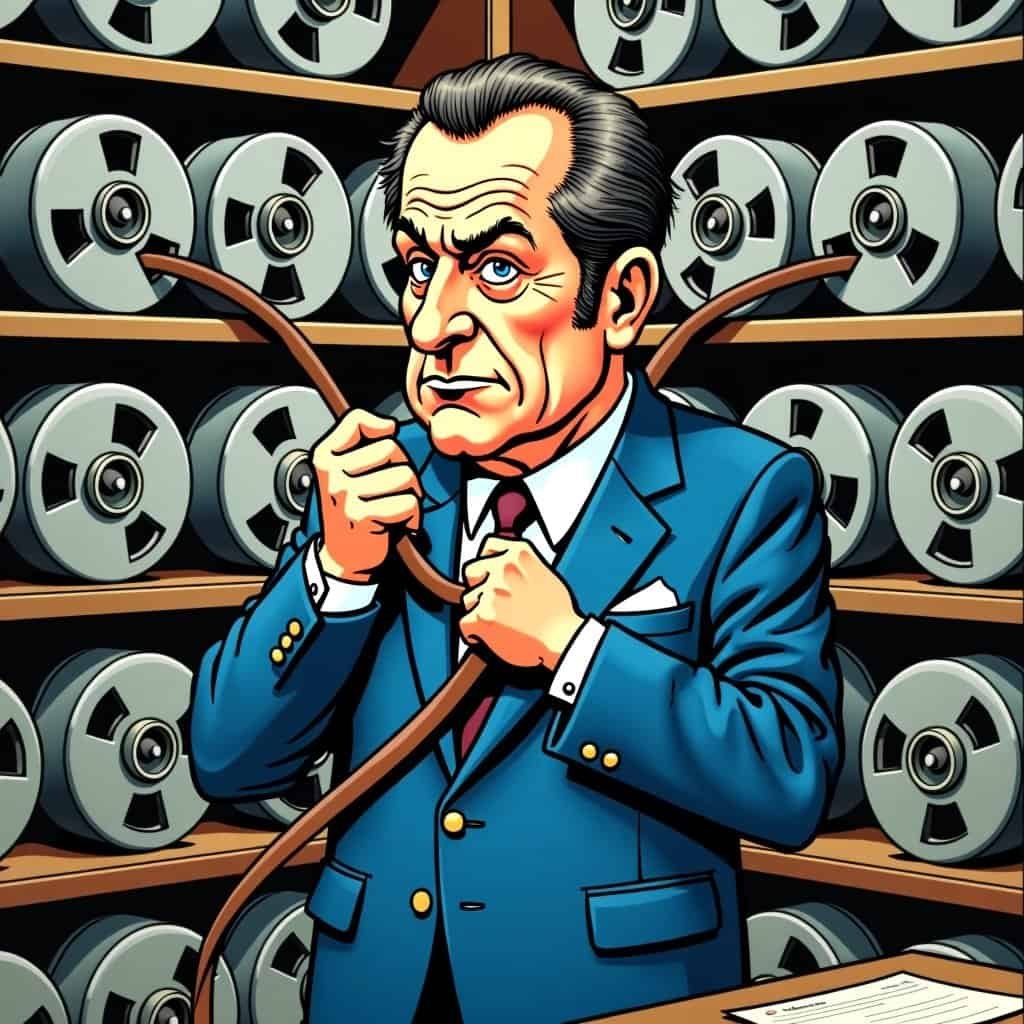Once upon a time in the land of politics, there came a moment so ironic it made even the Lincoln Bedroom quiver with history. Yes, dear readers, we’re talking about none other than Nixon’s famous taping escapades and the genesis of the Presidential Recordings and Materials Preservation Act. I can almost hear the ghostly echo of tapes being turned over in the night—for the purpose of “documentation,” of course.
Now, how does one end up on the receiving end of legislation bearing the charming ring of the “Presidential Recordings and Materials Preservation Act”? Imagine Richard Nixon, the everyman’s politico, a fellow who could chat up the best of them while commandeering the Oval Office tapes. Nixon probably thought he was making a vintage collection, something akin to a private podcast, if you will. Those tapes did more than just record policy anecdotes—they became the simmering stew pot for political comedy of the highest culinary order.
Of course, our liberal friends would think the whole taping affair was merely a Republican ploy to outmaneuver their savoir-faire of progressive dossiers. (The Democrats might just inhabit a paperless ecosystem—after all, who needs documentation when you’ve got narratives aplenty?) But, I digress. Back to our protagonist, President Nixon.
Nixon’s Taping System: A Technological Marvel
Picture a swanky corded contraption worthy of Jules Verne, tucked away in the West Wing. Nixon’s tapes were less of a talking point and more of a tool—ironic, since they’ve become the stuff of legend, drawing chuckles from the spirit of bureaucracy itself. Perhaps Nixon thought the tapes would immortalize the art of executive dialogue, giving “future generations” insight into statesmanship. Much like keeping a diary, except with reels.
| Feature | Description |
|---|---|
| Recording Device | Sony TC-800B open-reel tape recorder |
| Activation Method | Voice-activated system |
| Microphones | Hidden in various locations, including desk lamps |
| Total Recorded Time | Approximately 3,700 hours |
Well, things took a twist. However groundbreaking this technique seemed, it became part of history’s comedic rendition. Enter the Presidential Recordings and Materials Preservation Act—the moment Uncle Sam decided that presidential mementos weren’t meant as secret keepsakes but should rather be kept for archival public scrutiny. A smart move, no denying there, as it ensures transparency—an irony not lost in shrinking government footprints.
A Conservative Perspective on the Tapes
From a conservative lens, this saga serves as an amusing yet important reminder that personal responsibility and the blessing of free speech sometimes require limits—even in the hallowed halls of democracy. Nixon might have smirked at the realization: in a nation valuing individual liberties, even records mustn’t vest all power unto one. Such wisdom, one could argue, keeps the enduring flame of republican ideals burning bright.
Could Nixon have predicted the delightful paradox of his tapes conjuring both scandal and legislative preservation? Ah, quaint tales for historians. As conservatives, we understand the balance here at play. When government checks dance too heavily on freedoms, they become shackles. Yet, when wielded wisely, transparency may offer citizens their rightful narrative piece. And amidst the chuckles borne of history’s tales, we are reminded that democracy thrives in transparency—a delicate dance on a conservative floor.
Conclusion: Lessons from Nixon’s Tapes
So, fellow guardians of liberty, embrace this fun-filled trek into the political antics of yore. Nixon’s escapades, wrapped up in historical humor, blended an artful mix of lessons yet to be learned. For beyond the guffaws, the tapes, and the titular act, lies an amusing portrait of conservative values—responsibility wrapped neatly in freedom’s fold.
Table of Contents
- Nixon’s Taping System: A Technological Marvel
- A Conservative Perspective on the Tapes
- Conclusion: Lessons from Nixon’s Tapes






